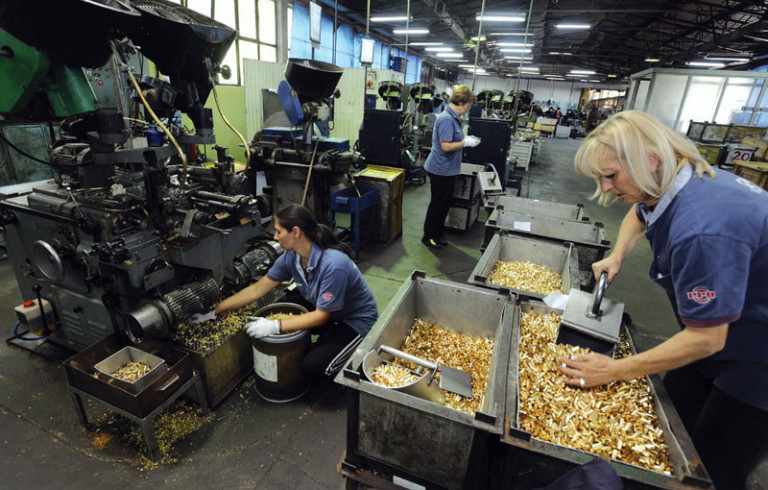
Just four days left to SHOT Show, and we’re continuing our series of previews, thoughts, and expectations of what to expect. In case you’re just getting up to speed, SHOT Show is the Shooting, Hunting, and Outdoors Trade Show hosted by the National Shooting Sports Foundation every year in Las Vegas, Nevada. SHOT is the largest trade show in the Shooting, Hunting, and Law Enforcement business, and every year Calibre Magazine makes the pilgrimage down to Vegas to meet with manufacturers, distributors, inventors, and media to get a sense of the what’s coming.
One of the big changes that Canadians are looking at this year is, unfortunately, the declining value of the loonie. As Canadian patriots, we at Calibre hate to admit that there is ever a disadvantage to being Canadian, no matter how factual or inconsequential, but sadly this time there’s no choice: we have a dollar worth about 70 cents US at the time of this writing, and forecasts are looking grim for the next twelve months. All the guns and ammo we bought when the dollar was at par now cost a solid 45 percent more; if you’re like us you’re filled with regret thinking about the deals you passed up just a year or two ago.
But short of cutting a deal with the Saudis, we’re stuck with a cheap dollar for the time being, so let’s give some thought to what this means, aside from the obvious “expensive US guns.”
First of all, the US is not the only source of guns. The Canadian dollar still buys about 33 Philippine pesos and the Philippines have seen a resurgent firearms culture as well, not to mention having a longstanding connection with the US military which has influenced the development of their shooting scene. The Philippines continues to be a primary source for 1911s, and we’re expecting a large number of fresh imports from their factories as Canadian retailers shift focus. We wrote extensively last year about Seraphim’s line of guns, which are imported from the Philippines, but we’re also expecting other companies to make similar OEM arrangements, and the industry will almost certainly improve as a whole as Philippine exports expand.
Turkish shotguns will likely continue to garner interest. The Canadian dollar is still worth more than twice as much as the lira, and while some of the more exotic shotguns which have been promised to the Canadian market are still clearing regulatory hurdles and the initial excitement has faded as buyers wait to see how many of the guns actually become available, the one thing we do know for certain is that Turkey’s shotgun manufacturing industry has moved forward in leaps and bounds over the past few years, and while some buyers may blanch at supporting Turkish companies, it might be worth remembering that most Canadian firearms manufacturers probably don’t wish to be identified with our current government, either.
Finally, don’t forget the European market. Yes, the Canadian dollar has declined against the euro, but not nearly as precipitously, and this could be an opportunity to start comparing quality European products, like Swarovski and Zeiss optics, for example, very favourably against competing US manufacturers. Ammunition manufacturers, also, such as Prvi Partizan, or Sellier & Bellot (who could use a boost recovering as they recover from the factory explosion back in September), might well start to dominate the Canadian market, and rumours of a new, European reloading components supplier have already begun to circulate in advance of SHOT.
So take heart, Canadians: the low dollar is definitely going to hurt most of us, but we can also start looking forward to increasing numbers of interesting imports, many of which are going to be unavailable in the United States on account of their restrictive import laws. So if nothing else, we can always sit around and gloat over European exotica. After all, gloating doesn’t cost a thing.